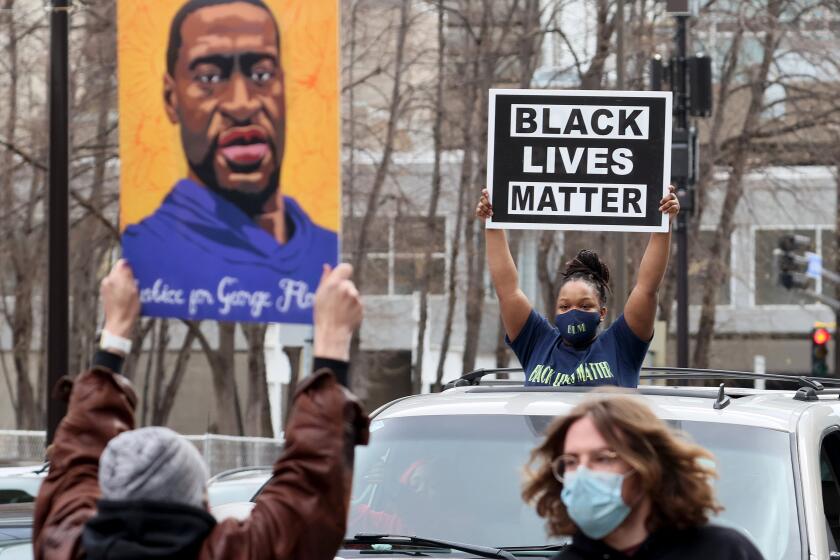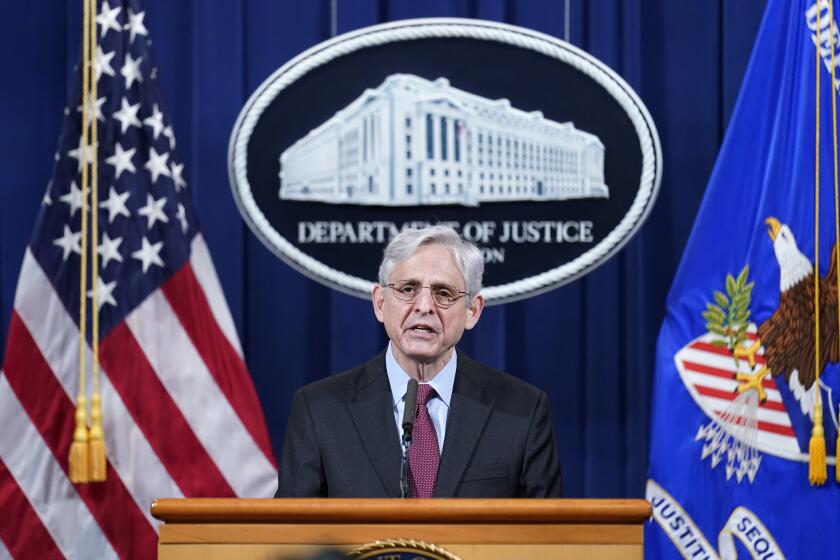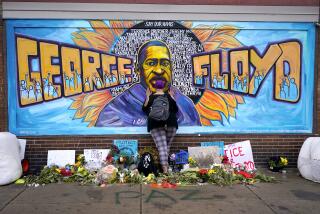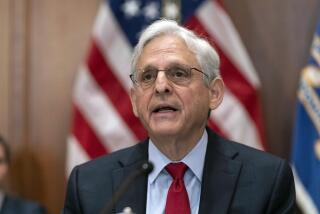The nation lauds Chauvin’s verdict in death of George Floyd. But what’s next in movement for racial justice?
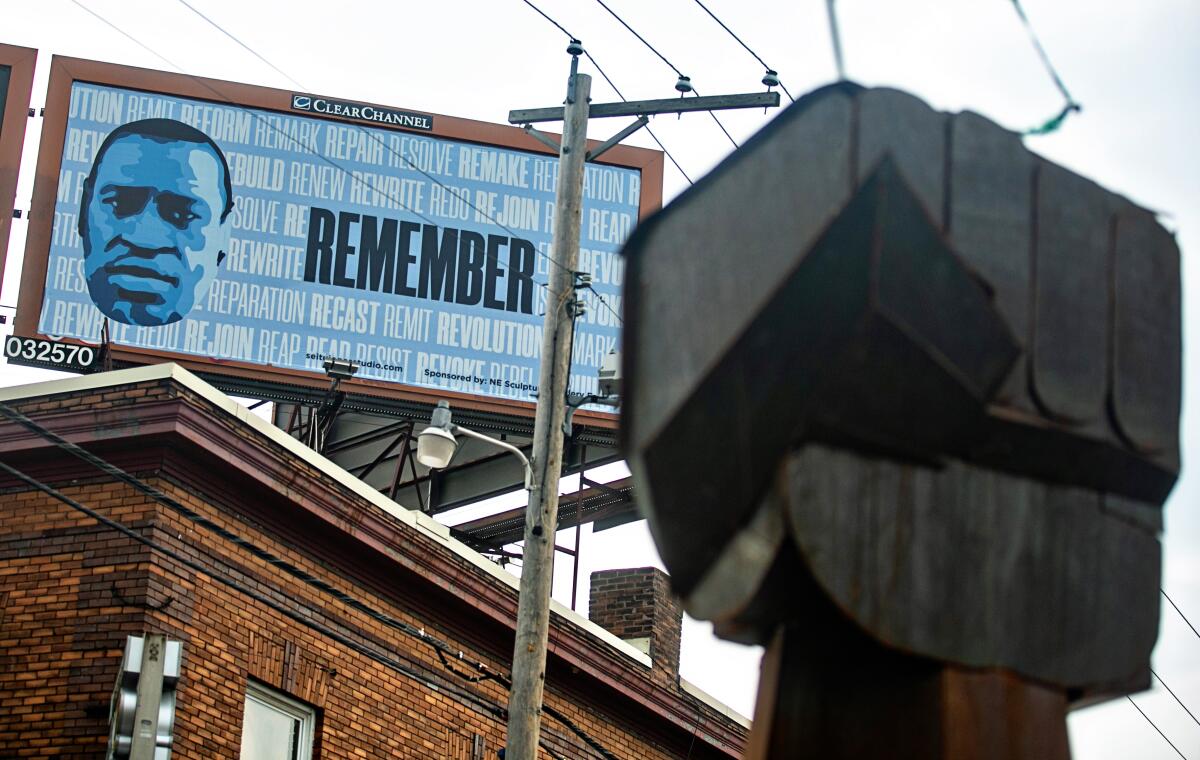
- Share via
MINNEAPOLIS — The screech of an electric screwdriver echoed off downtown skyscrapers as a man peeled the plywood from the front entrance of a hotel. A Minnesota National Guard soldier — unarmed and relaxed — stood nearby next to a Humvee.
A day after jurors convicted former Minneapolis Police Officer Derek Chauvin of murdering George Floyd, this city, which, like the rest of the nation, spent weeks bracing for a verdict that might ignite unrest, finally exhaled. Stores opened. Barricades were brought down. It felt — from south Minneapolis to the banks of the Mississippi River — as if justice had lived into another day.
But the feeling was fleeting. Lisa Cotton, who has been shining shoes in the lobby of a building here for years, put it this way: “My white clients often ask how I am feeling, how I am holding up,” she said about the past year of upheaval and marches to battle systemic racism and police brutality. “I often flip the question back on them, ‘How are you feeling? What are you going to do to inflict change at this moment?’”
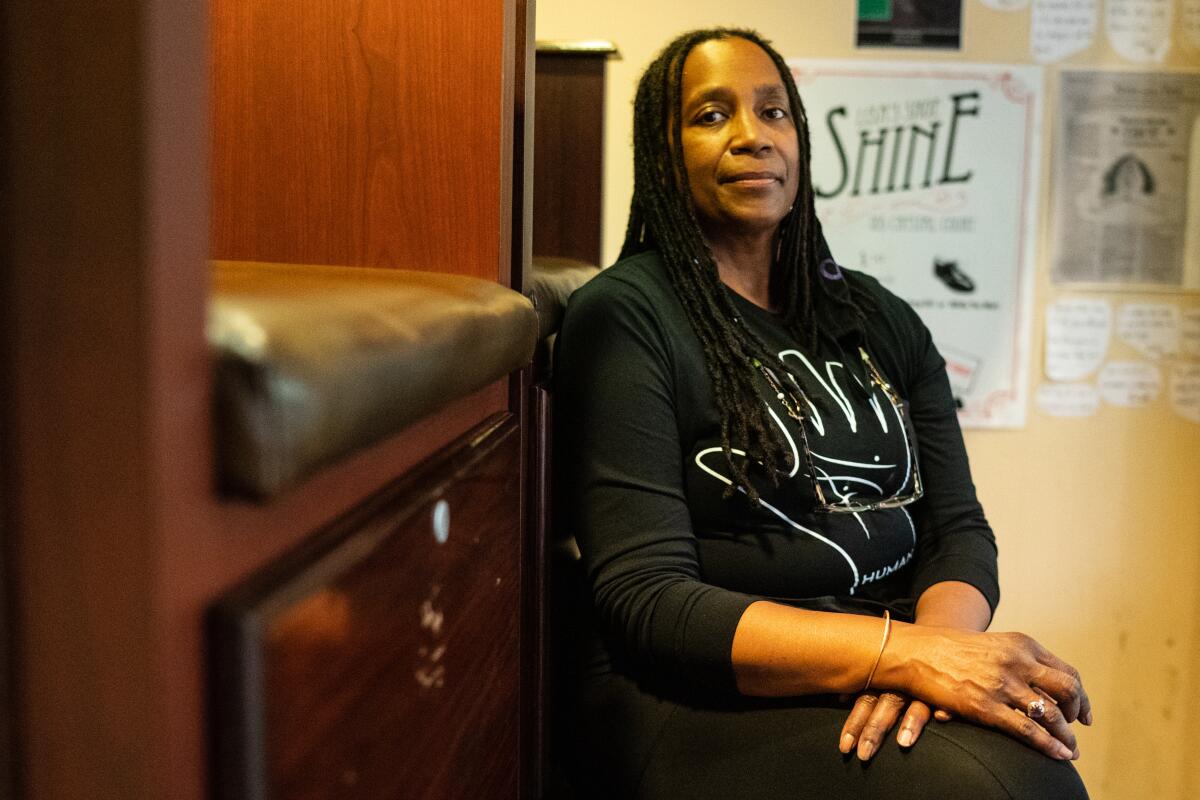
The answers to such questions are at once fraught and complicated even as news came Wednesday that the Department of Justice would investigate the training, tactics and discipline of a Minneapolis police force that is under growing pressure to reform.
“Justice is sometimes slow, sometimes elusive and sometimes never comes,” U.S. Atty. Gen. Merrick Garland said. “The challenges we face are deeply woven into our history.”
Such sentiments meant that despite the Chauvin verdict — he was guilty on all three counts against him — this predominantly white city, where Midwestern progressiveness collides with a troubled racial past, will remain a touchstone in the national debate over policing and racial justice. The parameters of that debate stretch near and far, told in police body-cam footage and videos of bystanders that go viral.
Ten days ago in the Minneapolis suburb of Brooklyn Center, an officer, who authorities say mistook her gun for her Taser, shot and killed 20-year-old Daunte Wright, an unarmed Black man, during a traffic stop. He will be laid to rest Thursday in a service expected to be attended by members of Floyd’s family, relatives of other victims killed by police and the Rev. Al Sharpton, who was already in town for the Chauvin trial.
The world reacts after a Minneapolis jury found former police Officer Derek Chauvin guilty for the May 2020 murder of George Floyd.
Twenty minutes before that trial ended Tuesday, word came that a police officer in Columbus, Ohio, shot and killed a Black teenager later identified by officials as 16-year-old Ma’Khia Bryant.
The Columbus police department quickly released body-camera video that showed Ma’Khia wielding a knife and threatening another teenager before the officer fired. But the department has been under scrutiny after several shootings of Black residents by white officers in recent years, including the 2016 shooting of 13-year-old Tyre King during a robbery investigation.
“It’s a tragedy, there’s no other way to say it,” interim Police Chief Mike Woods said about the most recent shooting. “I sure as hell wish it hadn’t happened.”
But it happens a lot, making many in Minneapolis wonder whether, despite murals of Floyd and flowers and wreaths laid in his honor on the corner where he died, a verdict against one police officer, rare as it may be, is enough to bring lasting change to law enforcement. Or will this city forever be synonymous with the 9 minutes, 29 seconds a Black man gasped and died face-down on the pavement?

Activists and politicians here spent Wednesday raising awareness about a City Council-backed measure that could go before voters this fall calling for the city to create a Department of Public Safety, which would encompass a broader health and social approach to fighting crime.
A similar ballot measure that could go before voters — an effort spearheaded by a coalition of liberal groups and young activists, which gained momentum after Floyd’s death — would also replace the Police Department with a newly created Department of Public Safety. All of this is being considered as three other officers are set to go on trial in August for their involvement in Floyd’s death.
Cotton spent the morning after Chauvin was led away in handcuffs surveying her city from the same spot — her shoe shop on the ground level of a skyscraper. She spends most of her time here, and over the last year she has seen peaceful protests and parts of her city burn. She has survived a pandemic and the strange ways history doesn’t always stay in the past.
Cotton has owned her shoeshine stand — two brown, elevated leather chairs — for nearly three decades. She remembers the uprising in Los Angeles after police officers were acquitted in the 1991 beating of Rodney King, and her conversations with clients now remind her of the same ones she had back then.
But on Wednesday, she said, the response was muted as if the city and the people were trying to move ahead.
Atty. Gen. Merrick Garland announces an investigation into Minneapolis police after an ex-officer is convicted of murdering George Floyd.
“No one brought it up,” Cotton, gripping a thick shoe brush, said. “I was waiting, but no one said a word about the verdict.”
As they have for most anyone who watched Floyd take his final breath under the knee of Chauvin, images from the video have gnawed at her soul over the last 11 months. But, Cotton said, this moment is about much more than the two men whose lives brutally intersected that day outside a south Minneapolis corner store.
“We need to have more humanity for each other,” Cotton said. “Even before George Floyd’s death, we all lacked humanity and empathy for each other.”
Overhead, a steady stream of people walked through a maze of enclosed skyways that dissect downtown, offering respite from the brittle Minnesota air. At lunchtime, restaurants were filled almost to capacity as employees have returned to offices after working from home for months. Along Lake Street — where several businesses burned last spring after Floyd’s death — people packed in at bus stops headed to jobs all across the city.
A few blocks away from Cotton’s stand, Brennan Roby sipped a coffee between bites of a ham and cheese croissant. The 24-year-old graduated from the University of Minnesota last year. He’s seen the unrest — the marches, the vandalism, the cries — and on Wednesday morning, he said, he felt some relief. Justice had been served, he said, but much more needed to follow.
“The verdict was good progress,” Roby said. “I do see hope for Minneapolis and the country.”
But, he said, the situation brought him no happiness.
“This isn’t a time to celebrate,” he said. “The whole situation is tragic.”
Moments later, on a TV in the shop, the local news cut to a segment about the upcoming funeral for Wright.
The rolling chyron at the bottom of the screen noted that at that time, National Guard troops would still be deployed in the city.
More to Read
Sign up for Essential California
The most important California stories and recommendations in your inbox every morning.
You may occasionally receive promotional content from the Los Angeles Times.
